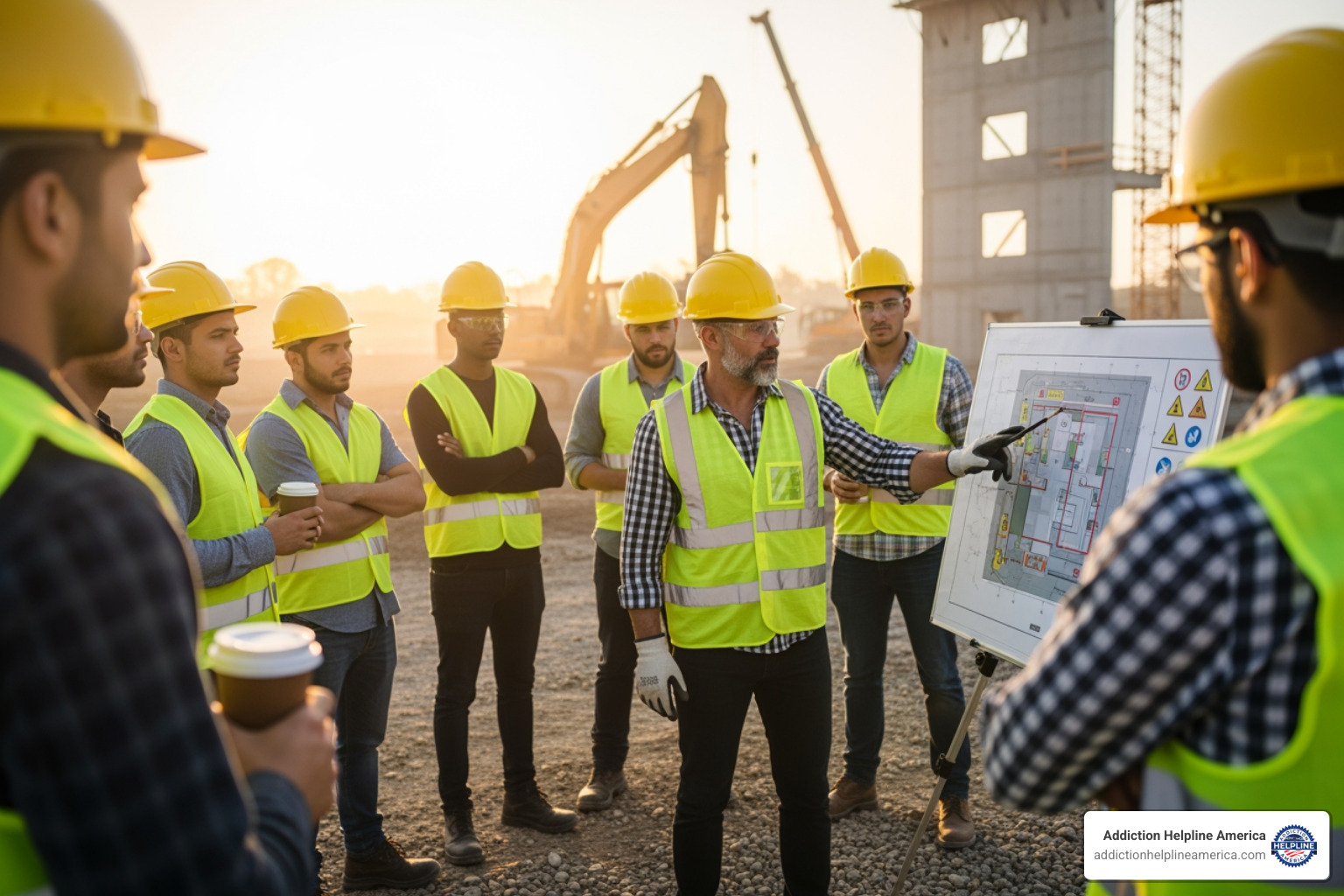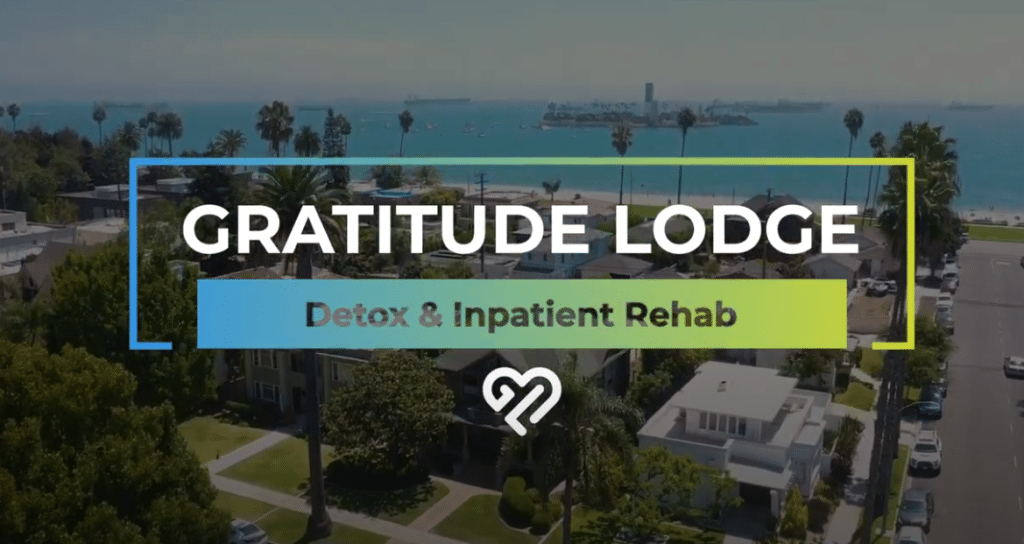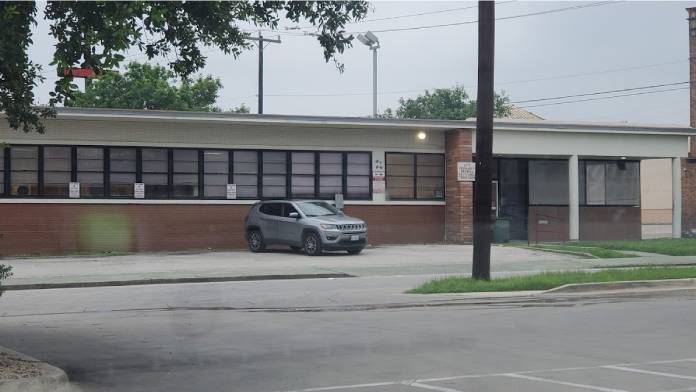
Why Construction Workers Face a Critical Battle for Sobriety
Staying Drug-Free on the Job: Essential Tips for Construction Workers is more than a guideline—it’s a matter of life and death. For immediate guidance, follow these steps:
Quick Action Steps:
- Understand the risks: Construction workers are 7x more likely to die from opioid overdoses.
- Know your company’s policy: Understand testing procedures and consequences.
- Manage pain safely: Explore non-opioid alternatives with your doctor.
- Use Employee Assistance Programs (EAPs): Confidential help is available.
- Watch for impairment signs: Look for unsteadiness, slurred speech, or poor concentration in yourself and others.
- Seek help proactively: Early intervention protects your job and your life.
The construction industry faces a sobering reality. Nearly 15% of construction workers have a substance use disorder—almost twice the national average. The job’s physical demands, chronic pain, long hours, and high stress create a perfect storm, leading many to cope with drugs or alcohol. The consequences are devastating, with substance use playing a role in many job site incidents.
The numbers are stark: 11.6% of construction workers used illicit drugs in the past month, and 16.5% engaged in heavy alcohol use. Alarmingly, construction workers account for 25% of all fatal opioid overdoses among workers.
But recovery is possible. Staying drug-free protects you and your crew. Working impaired or hungover slows reaction time and turns routine tasks into deadly hazards.
At Addiction Helpline America, we connect construction workers with confidential support. Our experience shows that with the right information, workers can build safer, healthier careers. This guide provides the essential knowledge you need to stay safe, sober, and employed.

The High Stakes: Why Substance Use is a Crisis in Construction
Construction is dangerous enough without adding substance use. Working with heavy machinery, at heights, and around power tools requires full alertness. When someone is impaired, their judgment clouds, reaction time slows, and coordination suffers. Routine tasks become potential disasters. More than 50 percent of employers surveyed by the National Safety Council confirm that impairment makes every person on the job site less safe.
The opioid crisis has hit construction particularly hard. Chronic pain from injuries and physical demands can lead to painkiller prescriptions that become a trap. As a result, construction workers are 7 times more likely to die of opioid-related overdoses than workers in other fields. These aren’t just statistics; they are coworkers and family members.
The financial toll is also staggering, with employers spending thousands on each employee with an untreated substance use disorder. But no dollar amount captures the real cost of lives lost and families torn apart. That’s why Staying Drug-Free on the Job: Essential Tips for Construction Workers is essential for survival.
The Alarming Numbers
The data from the National Survey on Drug Use and Health is clear. Our industry leads in substance use disorders.
- 14.3% of construction workers were diagnosed with a substance use disorder in the past year—almost double the national average of 8.6%.
- 11.6% of construction workers reported using illicit drugs like marijuana, cocaine, or opioids within the past month.
- The construction industry accounts for about 25% of fatal opioid overdoses among all workers, despite being a smaller part of the workforce.
These numbers represent real people, often suffering in silence for fear of losing their jobs.
How Impairment Cripples Job Site Safety
When someone works under the influence, their brain doesn’t function properly. Decision-making deteriorates, and safety protocols get ignored. Falls, slips, and trips—already a huge cause of injuries—become far more likely as balance and reflexes are compromised.
Operating equipment while impaired is like weaponizing machinery. A crane, excavator, or power saw requires absolute focus. With drugs or alcohol, even experienced operators become a danger to everyone.
You don’t have to be actively high to be a risk. Hangovers and fatigue from substance use are just as dangerous. Your reaction time is still slow, and your focus is scattered. On a job site where alertness is life-or-death, showing up hungover is showing up unprepared. The bottom line is that when one person is impaired, everyone’s safety is compromised.
Employer’s Playbook: Building a Drug-Free Workplace

As a construction owner or safety manager, you can create a safer workplace. A drug-free program isn’t about punishment; it’s about ensuring everyone goes home safely. Companies with drug-testing programs see a 51 percent reduction in incident rates within two years. This means fewer injuries and a more trustworthy crew.
Committing to Staying Drug-Free on the Job: Essential Tips for Construction Workers is an investment in your team’s well-being and your company’s stability.
Crafting a Robust Drug-Free Policy
A solid drug-free workplace policy is your blueprint for safety. It must be a clear, written document shared with every employee.
- Define prohibited conduct: Be specific about the use, possession, or influence of drugs or alcohol on company time or property.
- Address prescription drugs: Workers must understand their responsibility to disclose medications that could impair their ability to work safely.
- Outline consequences: Clearly state the results of policy violations, from mandatory treatment to termination.
- Ensure legal compliance: Your policy should comply with the Drug-Free Workplace Act and state regulations.
- Enforce consistently: The policy must apply to everyone, from laborers to foremen, without exception.
The Role of Drug Testing
When implemented fairly, drug testing saves lives. A comprehensive program includes several types of testing:
- Pre-employment: Ensures all new hires start on a level playing field.
- Random: Reinforces accountability throughout employment.
- Reasonable Suspicion: Used when a trained supervisor observes specific signs of impairment.
- Post-accident: Helps determine if impairment was a factor in an incident.
- Return-to-duty: Verifies that an employee is ready to work safely after completing treatment.
These programs create an environment where safety is the norm.
Fostering a Culture of Care and Education
A policy is not enough without a culture of genuine care.
Supervisor training is your first line of defense. Leaders must learn to recognize signs of impairment and approach workers with concern, not accusation. They should also know how to respond to an overdose.
Employee education should be ongoing. Regularly discuss the dangers of substance abuse, opioid risks, and available resources.
Stigma reduction is critical. Treat addiction as a health condition, not a moral failing. When workers see colleagues get help and return stronger, it breaks the silence and shame.
Employee Assistance Programs (EAPs) are invaluable. These confidential programs offer counseling and treatment referrals. Actively promote your EAP at toolbox talks and make it clear that using it is a sign of strength. At Addiction Helpline America, we’ve seen that combining clear policies with genuine support empowers workers to seek help before a crisis, making a drug-free workplace a reality.
Your Guide to Staying Drug-Free on the Job: Essential Tips for Construction Workers
Construction work is tough, and the physical and mental strain can be immense. While it’s tempting to use substances to cope, our focus and well-being are critical for getting home safely to our families. Staying Drug-Free on the Job: Essential Tips for Construction Workers is a personal commitment to ourselves and our crew. This section offers practical strategies, explains your rights, and shows how to support a struggling coworker.
Personal Strategies for Staying Drug-Free on the Job: Essential Tips for Construction Workers
There are healthier ways to cope with the physical and mental demands of construction than turning to drugs or alcohol.
- Manage pain safely: This is a major challenge. Talk to your doctor about non-opioid alternatives like physical therapy, massage, or anti-inflammatories. If opioids are prescribed, discuss the risks and use them cautiously.
- Develop healthy coping mechanisms: Instead of drinking after a tough shift, try exercise, hobbies, or spending time with family to decompress. Even a few deep breaths can help manage stress.
- Prioritize sleep and nutrition: Exhaustion and poor diet increase the risk of injury and the temptation to use substances. Taking care of these basics keeps you sharp and sober.
- Build a strong support system: Having family, friends, or trusted coworkers to talk to makes a huge difference. Peer support groups can also be incredibly valuable.
- Set clear boundaries: It’s okay to say no to after-work drinking or avoid situations that trigger cravings. Protecting your recovery is responsible, not selfish.
- Seek help proactively: Don’t wait for a crisis. Resources like SAMHSA’s national helpline at 800-662-HELP (4357) or FindTreatment.gov offer free, confidential support 24/7. Reaching out is a sign of strength.
Understanding Your Rights and Responsibilities for Staying Drug-Free on the Job: Essential Tips for Construction Workers
Knowing the rules protects you and helps you make informed decisions.
First, know your company’s drug-free workplace policy and testing procedures. Understanding the rules and consequences helps you avoid surprises.
Employee Assistance Programs (EAPs) are confidential. Reaching out to your EAP for help with substance use is a protected action.
The Americans with Disabilities Act (ADA) also offers protections. If you have a history of substance use disorder and are in recovery, you generally can’t be discriminated against, as long as you are no longer using illegal drugs and can perform your job safely.
If you seek help voluntarily before a policy violation, many companies will work with you through “second chance” policies. Using your EAP is often the best first step, as it provides confidential referrals without involving management in a disciplinary way.
How to Support a Coworker Who May Be Struggling
We are often the first to notice when a coworker is struggling. Looking out for each other is part of keeping everyone safe.
- Recognize the signs: Look for changes like unsteadiness, slurred speech, trouble concentrating, increased mistakes, or frequent lateness.
- Approach privately and with concern: Try saying, “I’ve noticed you seem a bit off lately, and I’m worried. Is everything okay?” Focus on behavior, not accusations.
- Listen without judgment: Your role is to be a supportive ear, not a diagnostician.
- Share resources: Let them know about the company’s EAP or suggest they call Addiction Helpline America for confidential guidance.
- Report immediate danger: If a coworker’s impairment poses an immediate threat, you must tell a supervisor. It may feel like a betrayal, but it’s a necessary step to prevent a tragedy. Safety always comes first.
Frequently Asked Questions about Substance Use in Construction
What should I do if I’m prescribed opioids for an injury?
Many injured construction workers are prescribed opioids, which account for about 20% of prescription drug spending in our industry. However, workers using opioids have a significantly increased risk of on-the-job accidents.
If your doctor prescribes opioids:
- Have an honest conversation with your doctor. Ask about the risks and explore non-opioid alternatives first, such as physical therapy or non-narcotic pain relievers.
- Inform your supervisor or HR per company policy. This is not about getting in trouble; it’s about making temporary accommodations to keep everyone safe while you heal.
- Follow the prescription exactly. Never take more than prescribed or share your medication.
- Be honest about impairment. If you feel drowsy, dizzy, or “off,” you cannot safely operate machinery or work at heights. Responsible recovery is a key part of Staying Drug-Free on the Job: Essential Tips for Construction Workers.
Can I be fired for seeking help for a substance use issue?
In most cases, no, you cannot be fired for seeking help proactively. The Americans with Disabilities Act (ADA) protects individuals with a substance use disorder who are in recovery or seeking treatment. This means an employer generally can’t fire you for a past issue as long as you are no longer using illegal drugs and can perform your job safely.
Many companies now offer “second chance” policies for employees who voluntarily come forward. Your company’s Employee Assistance Program (EAP) is completely confidential and a safe first step to get help without disciplinary action.
The key is timing. Seeking help before an accident or policy violation puts you in a much stronger position. Don’t let fear be a barrier to getting the help you need.
What are the signs of impairment I should watch for in a coworker?
Spotting impairment in a coworker can save a life. You’re not diagnosing addiction; you’re watching for behaviors that signal a safety risk.
- Physical signs: Unsteady movements, poor coordination, slurred speech, bloodshot eyes, tremors, or the smell of alcohol or drugs.
- Behavioral signs: Taking unnecessary risks, ignoring safety rules, making unusual mistakes, difficulty concentrating, or chronic lateness and absenteeism.
- Personal signs: Becoming withdrawn or isolated, increased irritability or mood swings, or a decline in personal hygiene.
Look for patterns, not just a single incident. If you believe a coworker is impaired and poses an immediate safety threat, report your concerns to a supervisor immediately. This isn’t about getting someone in trouble; it’s about preventing a tragedy.
Conclusion: Building a Safer Future, One Worker at a Time
The statistics are sobering: 14.3% of construction workers have a substance use disorder, and our industry faces a sevenfold higher risk of opioid overdose. These numbers represent our coworkers, friends, and family.
But solutions exist and they work. Companies that implement drug-free programs see a 51% reduction in incidents. When employers foster a culture of care and workers have the courage to seek help, lives are saved and careers are preserved.
Staying Drug-Free on the Job: Essential Tips for Construction Workers is about progress, not perfection. It’s about employers prioritizing safety, coworkers looking out for each other, and individuals making the brave choice to address their struggles. Recovery is happening every day, and you can be part of it.
If you are struggling with substance use or are worried about a coworker, don’t wait for a crisis. You deserve support, and your crew deserves to work alongside someone who is fully present and alert.
At Addiction Helpline America, we connect construction workers with free, confidential, and personalized support. We understand the unique pressures of your industry and work with a vast network of treatment centers to find the right program for you.
Making the first call takes courage. Find confidential help and drug addiction treatment options today. Your safer future starts now, and we’re here to help you take that step.
Our helpline is 100%
free & confidential
If you or someone you care about is struggling with drug or alcohol addiction, we can help you explore your recovery options. Don’t face this challenge alone—seek support from us.
Programs
Resources
Will my insurance
cover addiction
treatment?
We're ready to help
Find the best
drug or alcohol treatment
center
Are you or a loved one struggling with addiction? Call today to speak to a treatment expert.
















